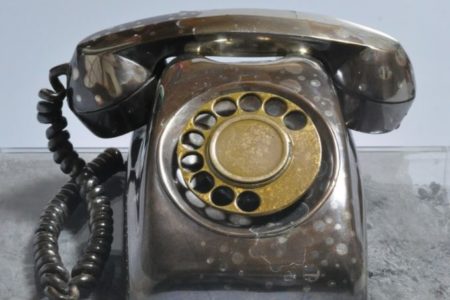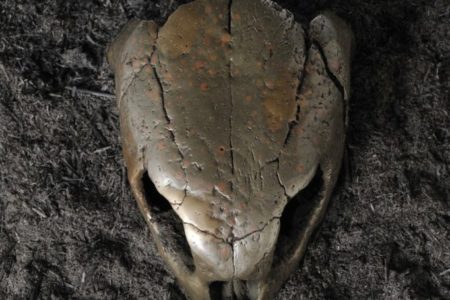memento
2011
Copper alloy, Ash / 銅合金、灰
Copper alloy, Ash / 銅合金、灰
These pieces of art were realised by borrowing the possessions of those I personally knew who had past away, and directly making cast models of them by metal.
Metal has widely been used for religious rituals. Although it has occasionally been used to represent the power of the authority in the past, it has at the same time maintained its catalytic aspect for approaching the sacred realm.
Personal belongings of the deceased are special objects for the left relatives and acquaintances. They are not for those that passed away, but rather for filling the holes in the mind of the left ones. By transforming the possessions into something with semi-permanent durability using the historically egoistic and spiritual aspects of metal, our ego and sense of respect for the death was made into two sides of the same coin. While I do not necessarily consider doing this to be right, I do feel beautiful sorrow towards such sad egoism and respect for the death.
In order not to forget the metal objects used to belong to the dead, their bases were made of the ashes, which were produced by burning some of these belongings, and this made the object constantly coexist with the sense of death. Metal’s eternal glare and ashes’ momentary and empty aspects were both essential to this work.
これらの作品は、実際に私自身の身の回りで亡くなった人たちの遺品をお借りして、それらの型を取り、金属のオブジェにそのまま写し変えた物です。
金属は元々神事に広く世界のなかで扱われてきました。時としてそれは権力者の威光を示すための物として歴史的に扱われてきましたが、同時に神聖な世界にアクセスするための触媒としての側面も持ち続けました。
故人の遺物は残された親族や知人にとって特別な物です。それは故人の為ではなくその人逹のための心の空白を埋めるための存在でしょう。金属の持つエゴイスティックな歴史的な側面と、霊的なイメージでもって遺品を半永久的な強さを持つ物に変えることで、人間のエゴと純真な死を尊ぶ感性は表裏一体な物に姿を変えます。私はそれが正しい行いとは考えませんが、そうした悲しいエゴイズムと死に対する敬意に対して美しい哀愁を感じます。
金属のオブジェが遺品であったことが忘れるこのないように、オブジェの台は遺品を燃やした灰で作られ、死の存在を常に共存させるようになっています。金属の半永久的な輝きと灰の瞬間的な虚無はこの作品においてどちらが欠けても成り立たないためです。


